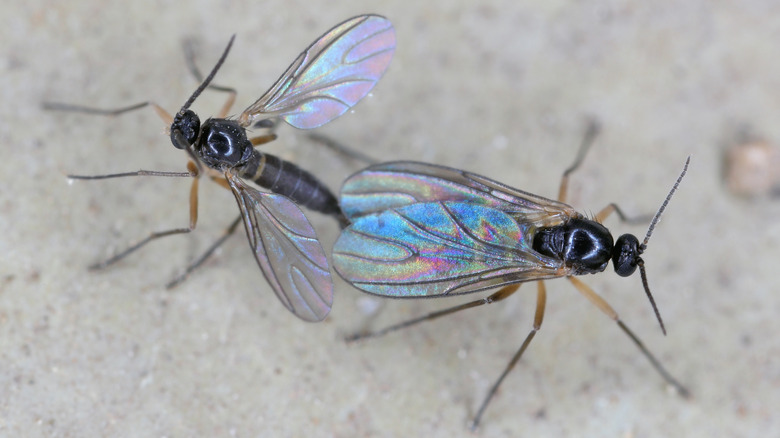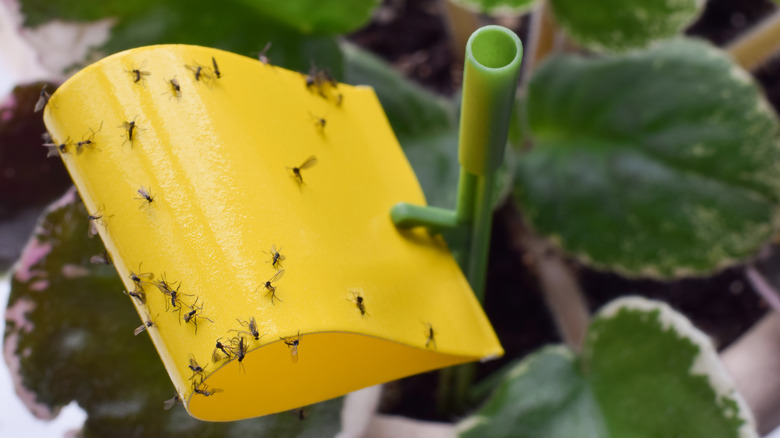What Are Fungus Gnats (And How Do You Get Rid Of Them)?
We may receive a commission on purchases made from links.
Gnats are some of the most annoying flying insects, buzzing around in your face no matter how often you swat them away. And, there are several different types including sand flies in tropical regions, drain flies that breed in sinks, and midges that look like mosquitoes. One gnat on this list of tiny insects nests in moist soil: fungus gnats.
Since they're so tiny, fungus gnats look like delicate black flies and may even be mistaken for mosquitoes at first glance. The adults are insects that lay eggs in moist soil or organic debris, and from there, the larva develop through four stages before becoming pupa and then adults. On average, they grow to be about 1/16 to 1/8 inch long and have clear to gray wings. Their segmented antennae are longer than their heads, distinguishing them from larger shore flies that have shorter antennae but can be found in similar environments such as potted plants, greenhouses, and nurseries.
Adult fungus gnats are primarily known for being a nuisance and being attracted to light, so if they get inside your home, you'll likely see them flying around the windows. However, the larvae are a different story. Appearing as small clear-to-white worms, they feed on compost, leaf mold, grass clippings, mulch, and even plant roots, which is why you want to get rid of them as soon as possible.
How do you get rid of fungus gnats?
Believe it or not, it's just as easy to get rid of fungus gnats as it is for them to infiltrate your houseplants. You have a few options. One is to water your plants from the bottom rather than the top so that most of the soil remains dry, deterring this type of plant-eating insect from laying its eggs. However, the problem is that water-hungry plants, such as ferns, may respond poorly to this remedy. Another option is to put gravel or coarse sand on top of the soil, which is said to deter fungus gnats by removing the organic matter that they're attracted to. This technique doesn't always work, though.
A third option (and possibly the best one) involves a combination of pest-killing bacteria and sticky traps. The bacteria is called Bacillus thuringiensis israelensis, which is available in a concentrated liquid — like MICROBE-LIFT BMC2 — that you add to water before watering your plants. Approved for organic farming and non-toxic, this naturally occurring soil bacteria can kill fungus gnats and other pests, including mosquitoes. With the soil treated, you can add some sticky traps — such as LFSYS Sticky Trapz — to catch the adult insects flying around, preventing them from laying more eggs and allowing you to kill and dispose of them.
Once the fungus gnats are gone, it's possible to limit attracting more by managing the moisture in the soil. You can do that by using well-draining pots and potting mix. Also, use soil mixes that don't contain a lot of organic matter, and store extra soil off the ground and in closed containers.

